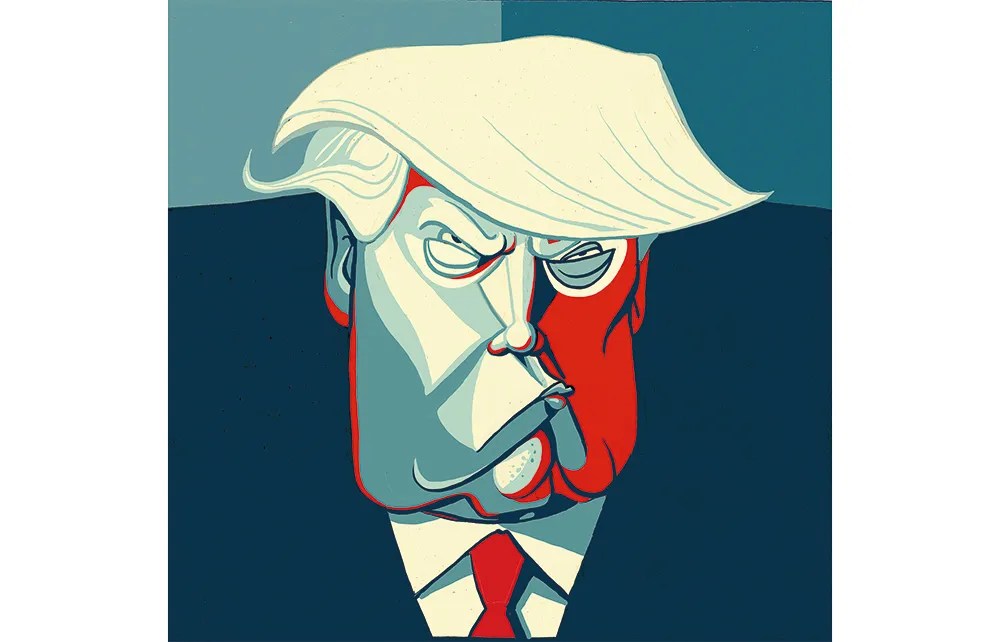After Donald Trump’s Liberation Day, the US now imposes far and away the highest tariffs of any developed country in the world.
In the process of doing so Trump has completely rejected the cornerstone of the World Trade Organisation: the ‘most favoured nation’ principle whereby tariffs have to be the same on all countries you don’t have an explicit trade agreement with.
He has also cast aside the US’s system of free trade agreements – for example, imposing tariffs on Australia despite there being a decades-old Australia-US agreement removing tariffs.
His reasons for doing this reflect his dissatisfaction with the way the international financial order has worked for many years. He thinks that various foreign countries have manipulated their currencies to keep them unnaturally cheap against the dollar, resulting in the US running a high trade deficit and losing jobs in industries sensitive to currency strength (particularly the blue-collar jobs in manufacturing held by his natural voter base) to countries such as Mexico, China and Vietnam.
His thinking on this point reflects a deep conceptual confusion. When a country’s currency floats (as the US dollar does) and inflation is relatively low and stable (as it is normally in the US) that country’s trade deficit is the result of investment inflows. The reason the US runs a trade deficit is that foreigners want to invest in the US more than US investors want to invest abroad (reflecting the relative strength of the US economy).
If Trump wants to cut America’s trade deficit then, unless he wants to devalue the dollar (causing a bout of US inflation), he needs to change the relative attractiveness of investing in the US and elsewhere. His most straightforward way of doing that would be to cut the US government’s budget deficit (since buying US government bonds is what many of those foreign investors do).
If tariffs cut the US trade deficit, the main reason will be that they screw up the US economy more than they screw up foreign economies. I doubt Trump will be happy if that is what happens.
The actual basis for the tariff rates Trump is charging is amongst the most bizarre in economic history. He put up a table with a heading marked ‘Tariffs Charged to the U.S.A. including Currency Manipulation and Trade Barriers’. The actual tariff charged is half what he claims the US is charged (down to a minimum of 10 per cent). There was some initial confusion about where those ‘Tariffs Charged to the U.S.A.’ came from. Had an official done a series of complex calculations of tariff and non-tariff barriers, blending in an allowance for the tariff equivalent of currency manipulation?
No. Astonishingly, this column appears to be simply a ratio between the US deficit in goods trade to imports from each country. That is absolutely bizarre. ‘Trade barriers’ cannot be measured in this way. Not roughly. Not approximately. Not by any order of magnitude.
You could face no trade barriers at all when exporting to a country and still run a large trade deficit. And you could face massive trade barriers exporting to a country and still run a large trade surplus. Trump could just as coherently have defined his tariffs by the ratio of his head circumference to the inside leg measurement of each trading partner’s head of state.
These tariffs may not be maintained. Trump has vacillated over his tariffs against Mexico and Canada. Maybe these tariffs against the rest of the world will be just as short-lived. But if he does maintain them that will create huge dislocations in the world economy, probably creating a world recession as countries adjust.
As for the UK, we were hit with a 10 percent tariff – the minimum. Senior Labour folk tried to pitch this as a vindication of their Trump negotiating strategy. But in fact it’s simply the result of the US running a goods trade surplus with the UK.
Still, it’s definitely the case that the UK has gained by having a 10 per cent tariff instead of the 20 per cent tariff slapped on the EU, which we would have been subject to as members. This is an obvious Brexit benefit – even if some have a pathological need to deny this is the case. Yes, a 10 per cent tariff is bad. But a 20 percent tariff would have been far worse. It’s absurd to try to pretend otherwise.
The UK having a much lower US tariff than other countries (not just the EU – China is at 54 per cent and Vietnam is at 46 per cent) means we will gain from the diversion of trade and investment flows. We’ll also gain in the shorter-term from cheaper goods that would have gone to the US being sold in our markets instead (such as Chinese or Vietnamese products). That effect could be quite large. How it all plays out though in the longer term is complex. No one yet knows.







Comments